The infamous 350z vs 370z debate is a hot topic in the JDM community and for good reason. Nissan single-handedly changed the face of racing and affordable performance with the Z range.
They proved that it is possible for automakers to build high-performance sports cars at a price that many people can afford while introducing an entire generation to the pure joy of driving one.
In this guide, we’ll cover the key differences between the 350z and 370z, see what it’s like to own either one and decide which one’s worth buying.
History: From A to Z
It all started with Datsun’s first attempt at making a sports car; the Fairlady.
Around 1961, Nissan was planning to launch a newer version of their Datsun SPL213 sports car in North America.
Katsuji Kawamata, then president of Nissan, thought it would be a great idea to name the car “Fairlady” after the hit Broadway musical, My Fair Lady, in hopes that it would also be a hit. But it wasn’t. People wanted more.
They started pushing for an affordable, international sports car. The idea was for it to be fast, reliable, and relatively inexpensive to manufacture.
This eventually became the signature of all Z cars to roll out of their stable after that point. The first one was called ‘Fairlady Z’, rebadged as the Datsun 240z for the US market where it sold like hotcakes.
Critics and customers loved it. Other cars in this price range couldn’t match the performance; something that stood true with the 350z but not the 370z. The 370z had company. Lots of it, but more on that later.
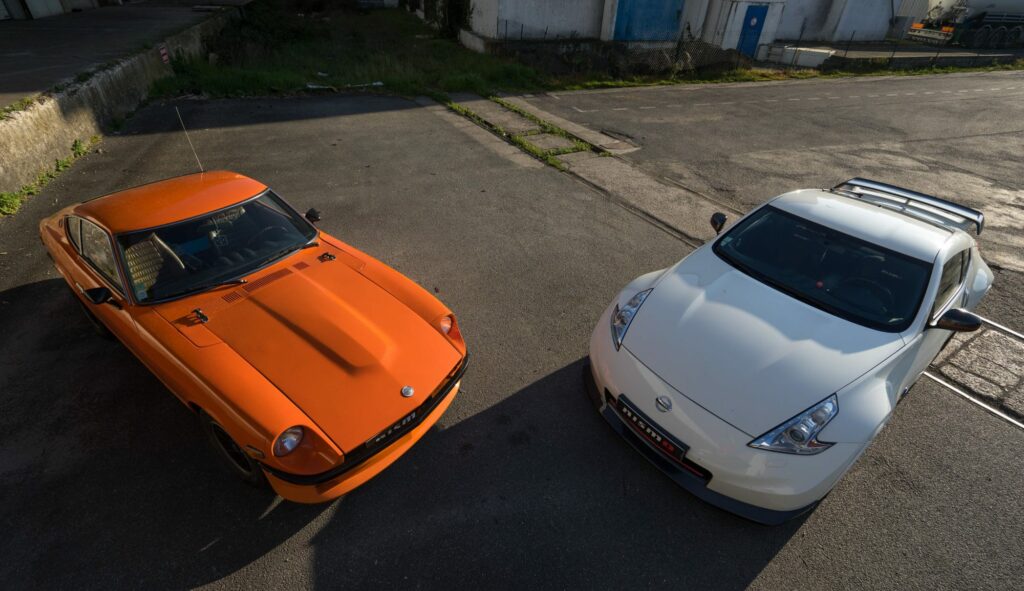
Datsun experimented with some more iterations of the 240z that were more luxurious and touring-oriented, but they weren’t as successful. They were convinced that their primary customers prioritized performance over almost everything else.
In 1983, along with the last Datsun Z (i.e. the 280zx), the Datsun name retired. From this point on, it was Nissan all the way.
Which then brings us to the 300zx. It retained the luxurious feel of its immediate predecessor but with more power.
It was one of the first cars Nissan redesigned from the ground up and thus managed to stuff a bigger, twin-turbo, 300 horsepower engine under the hood. It went head to head with the C4 Corvette (the slow one), NSX and Supra.
The styling was so ahead of its time that even Lamborghini borrowed design cues from it for the Diablo. Overall, it did amazingly well in the market until an unfortunate, unforeseen economic blowout made the 300zx a lot more expensive.
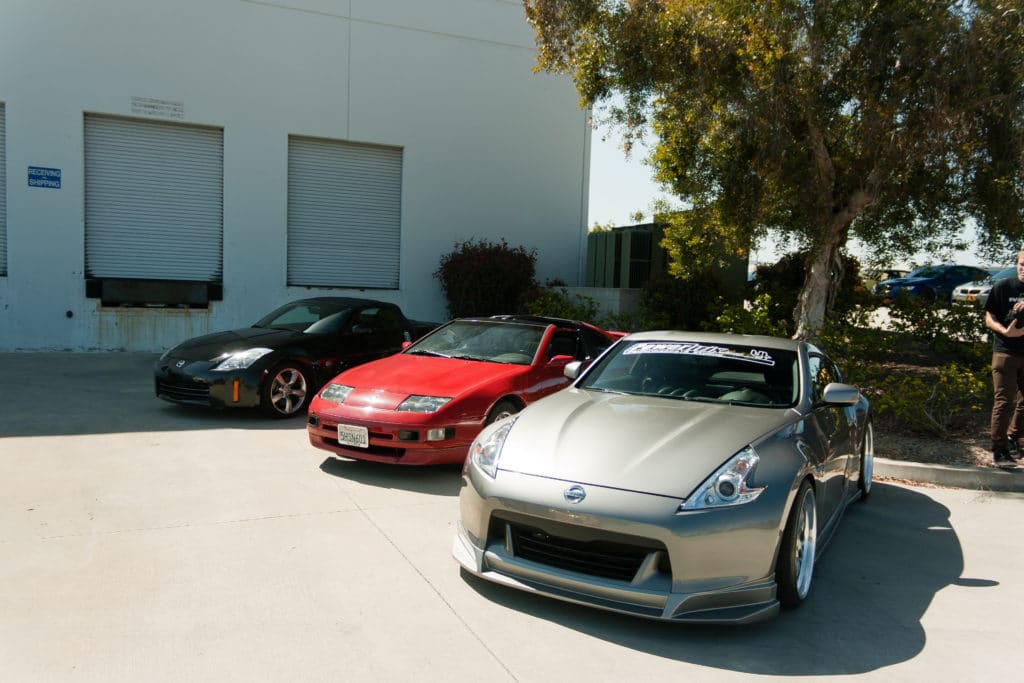
Markets stabilized and in 2001, Nissan announced that they’d bring back the Z and still keep it profitable.
In hopes that it would revive its reputation in the two-seater sports car market and bring back the glory days of the Z, Nissan wanted to create a car that looked the way it drove and drove the way it looked. Enter the 350z.
Equipped with the 3.5 liter VQ35DE V6, the 350z churned out 287 horsepower which, at the time, was really fast (and still is), especially for its price.
It was no pin-sharp racer with knife-edge handling but people could get their hands on Porsche-like performance at almost half the price! Needless to say, it was an instant hit.
In 2007 the 350z was revised with a better engine, which unlocked its true potential, and then it was completely redesigned in 2008 as the 370z.
350z vs 370z Differences
When the 350z was launched, it was all the rage. Having dominated the tuner scene thanks to its near mod-friendly chassis and iconic high-revving VQ35DE V6 Engine, it became the car of choice for performance enthusiasts and quickly rose to popularity.
With its curved roofline, neatly flared arches, and long hood, it was a design unlike any at the time.
Nissan has made a lot of improvements to the 350z over the years that resulted in an incremental increase in power and reliability. However, between 2000 and 2010, the automotive market evolved at a staggering rate.
Many enthusiasts believe that the 370z is everything the 350z should have been, right out of the gates. The key differences included:
- A revised infotainment system
- A premium interior finish
- Lower suspension
- A shorter and wider body
- A more reliable and powerful VQ37HR engine
The 370z 350z comparison debate will always go on. In order to experience the 350z vs 370z difference firsthand, you must drive them both. On paper though, the 370z is better in every way, while the 350z provides a more raw driving feel.
They’re both equally relevant today because of how they’re positioned and the type of buyers they attract.
Most Notable Performance Differences
350z vs 370z: 0-60 & ¼ Mile Time
Here’s a quick glance at the 0-60 and quarter mile numbers that both Z cars are capable of:
| Year & Model | 0-60 Time | 1/4 Mile time |
|---|---|---|
| ’03 350z | 5.1 | 13.5 |
| ‘03 350z Roadster | 5.6 | 14.1 |
| ‘08 350z | 5.2 | 13.5 |
| ‘09 370z | 4.5 | 13.0 |
| ‘10 370z Roadster | 5.0 | 13.5 |
| ‘11 370z | 4.6 | 13.0 |
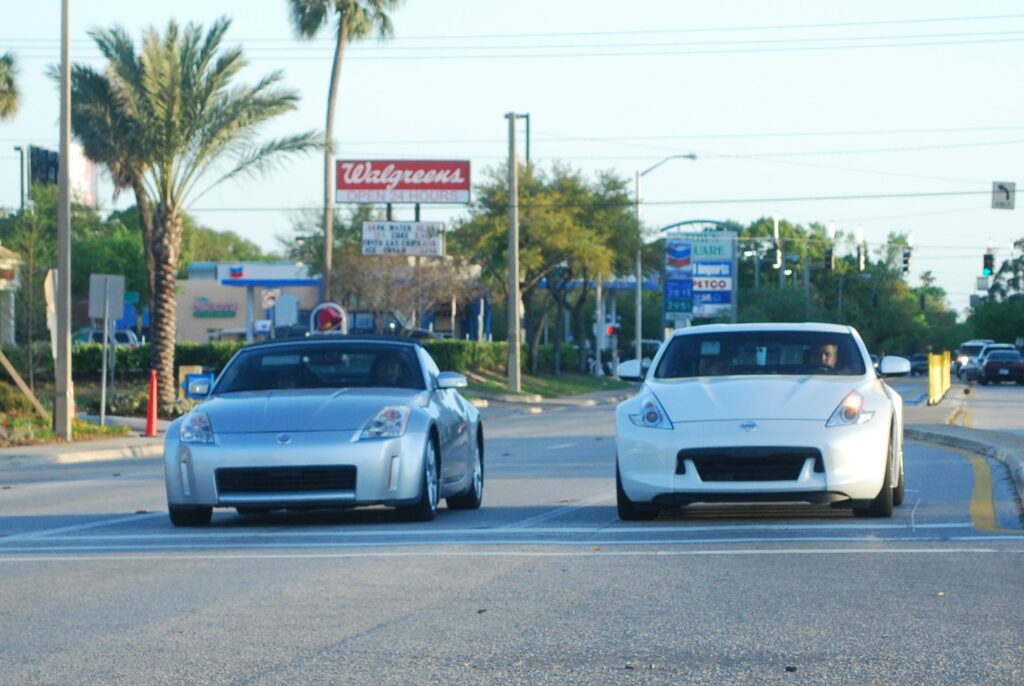
Engines Over the Years
2003–2005 350z: VQ35DE
From 2003 to 2006, the 350z came equipped with the VQ35DE V6 engine, which later got revised in the 2007-2008 iterations.
After 2007, the 350z came with the VQ35HR engine. Significantly different from its predecessor, the HR was far more reliable but had less aftermarket support compared to the DE, at the time. The VQ35DE is among the most mod-friendly, yet, reliable engines ever made.
Nissan also launched a ‘Rev Up” version of the DE as their 2005 anniversary edition, which jumped from 287 to 300 horsepower.
Though they revved higher, the torque was compromised slightly. Many owners of this engine complain about it consuming a lot more oil.
The RevUp engine comes with variable exhaust valve timing, a remapped ECU, a different ABS computer, a wiring harness, and internals. It was basically a factory-tuned DE. You can even turn a non-RevUp into one, by yourself.
Engine Code: VQ35DE
Layout: Four-stroke, V6
Displacement: 3498 cc
Fuel System: Sequential multi-point fuel injection
Cylinder Bore: 95.5mm
Piston Stroke: 81.4mm
Compression Ratio: 10:1 – 10.5:1
Power: 287 bhp @ 6200 RPM
Torque: 274 lb.ft (371Nm) @ 4800 RPM
Firing Order: 1-2-3-4-5-6
2007-2008 350z: VQ35HR
‘HR’ stands for ‘High Response’ or ‘High Revving’, and it does rev higher than the DE with its redline at 7600 RPM with 90% of its torque coming in by 2000 RPM.
If you don’t intend on making too many upgrades to your engine and want something that runs satisfactorily on its own, then definitely get the HR.
With similar mods, both engines will run very similar quarter-mile times, even though 80% of their parts aren’t interchangeable. There’s no doubt that the HR is built better, has stronger internals, and is far more reliable.
The HR engine gets dual throttle body intake and its valves come with hydrogen-free DLC coating which allows them to open and close much faster, aiding the CVTC (continuously variable valve timing) system for more efficient combustion.
This allows for better performance and gas mileage (which isn’t great, to begin with, but there’s an improvement).
Engine Code: VQ35HR
Layout: Four-stroke, V6
Displacement: 3498 cc
Fuel System: Direct Injection
Cylinder Bore: 95.5mm
Piston Stroke: 81.4mm
Compression Ratio: 10.6:1
Power: 306 bhp @ 6800 rpm
Torque: 268 lb.ft (363 Nm) @ 4800 rpm
Firing Order: 1-2-3-4-5-6
2008+ 370z: VQ37VHR
We like to call this one, the grown-up Z engine. Having arrived in 2008 as the successor to the VQ35, the VQ37 has a larger displacement, more power, and more torque.
It is far more complicated with a lot of moving parts that operate under high stresses, producing a lot of horsepower, while still being reliable.
The fact that this engine has been called “reliable as a hammer” is a real testament to the Nissan organization. It isn’t a small thing to make something like this on an industrial scale, at an affordable price.
The VQ37VHR fixed a lot of issues seen in its previous iterations. Nissan was observant over the years and listened to its customers carefully.
This engine was the ideal choice for the 370z making the whole package a really solid upgrade from the 350z, in comparison.
Engine Code: VQ37VHR
Layout: Four-stroke, V6
Displacement: 3696 cc
Fuel System: Direct Injection
Cylinder Bore: 95.5mm
Piston Stroke: 86.0mm
Compression Ratio: 11:1
Power: 332 bhp @ 7000 RPM
Torque: 270 lb-ft (366Nm) @ 5200
Firing Order: 1-2-3-4-5-6
Suspension Differences
Although, the stock suspension isn’t as bad as you’d think; especially the setup on the 370z as it received some much-needed upgrades and changes that the 350z’s stock setup severely lacked.
The 370z stock setup has a shorter radius rod which is more parallel to the ground. Even its axis and upper control arms are more parallel to the ground as opposed to the 350z.
Thanks to these changes and the relocation of pivots, you’ll observe reduced squat which will help bind the springs less, under acceleration or braking, making it freer to move.

This way, your rear tires will have more grip on corner exits and a more linear ratio between weight transfer and throttle opening. This is useful for throttle steering and reduces the chances of wheel hop under hard acceleration or braking.
Long story short, stock for stock, the 370z will be glued to the line and will blast out of corners with great precision.
Of course, suspension is often the first thing that sees an upgrade on the 350z. There are tons of aftermarket suspension components available for both cars; everything from camber arms, sway bars, lowering springs, coilovers, etc.
Money saved on a 350z and put into aftermarket parts might set you up with a better-handling car in the long run.
Gearbox & Transmission Differences
Manual
Nissan revised the transmission unit for both cars a bunch of times with the most significant upgrades taking place after 2004. Before this, the transmission units were prone to hard shifting, slotting, and grinding issues.
Most notably, all units labeled CD001 to CD008 had these issues. These are the ones to avoid if you’re buying a used Z.
Launched after 2004, the CD009 is the most trusted and reliable manual transmission assembly and we encourage you to specifically look for this one if you want to replace your current unit. It came with stronger internals and updated synchros.
Every transmission unit that the Z came with after this, was built on this reliable platform. It is very difficult to distinguish between the CD009 and its previous versions but there are ways.
Identifying CD009
Identifying a Nissan CD009 is vital if you want a transmission unit that can take the load when driving fast, without breaking parts. Here’s how you can do it:
- Google the VIN number found on the transmission unit to determine which car it is from. If the car it came from is pre-2001, avoid investing in that unit as it’s not a CD009.
- Otherwise, look for the SynchroRev chip on the top. It’s a 3-inch wide, silver, rectangular chip that’s very noticeable. If it has one, it’s most certainly a CD009 as the said feature only comes with this transmission unit. If it does not have this chip, there’s a chance that it isn’t what you’re looking for and so, further examination is needed.
- Look for the triangular shifter bracket towards the end of the unit. The one on CD009 is usually a hollow frame. If it’s a solid triangle, it’s probably a CD001.
Automatic
For those who prefer a less involved driving experience, the automatic transmission available on all Zs is pretty solid.
The 5-Speed automatic allowed full manual control and was one of the lightest, smallest, most advanced full-range autoboxes at the time. They later got replaced with the smoother, more reliable Jatco 7-Speed Auto.
Visuals
Interior
Get in the 350z, and the first thing you’ll notice is how driver-centric the interior is. Everything points slightly towards the driver’s side.
The seats are very well-bolstered and keep you well-planted. The shift knob, steering wheel, and pedals are exactly where they should be, making the driving position very ergonomic.
When designing the 350z, Nissan kept the interior design simple, to keep costs low. The quality won’t impress you as it uses hard-touch plastics that become flimsy and rattle over time. The paint too, chips off over time.

Compared with the 350z, the 370z is most certainly a step up with softer, finer materials throughout the car, one of much higher quality. It has a revised infotainment system that continues to be used in production models in 2019.
Exterior
Back when the 350z was launched, people absolutely loved the way it looked. The stunning design was way ahead of its time and has aged very well. Even today, it looks just as good, or perhaps, better.
The camera loves its unmistakable coupe silhouette. No wonder why it was featured in movies and video games. Those tail lights were the best thing to stare at when playing Need For Speed Underground 2, back in the day!
We really love how subtly the 370z’s design evolved. It’s just the right amount of difference, nothing radical. With revised lines, and interestingly shaped front and rear lights, the car now has a more aggressive look.

It has retained the best things out of the 350z’s design, making it even harder to decide which one’s more gorgeous.
Long Term Reliability
Ask multiple 370z or 350z owners about their cars reliability, and you’re bound to hear mixed opinions. Some people swear by specific iterations of the VQ engine while others feel any model is worth considering.
Good long-term reliability is almost always a by-product of great maintenance and well-calculated decisions. If you select the right car and treat it well, it will be reliable.
Reliability is a major concern especially if you’re buying used. The used tuner car market is currently littered with poorly maintained 350z’s where previous owners have driven them to hell and back, made modifications without appropriate maintenance, and are now tired of shelling out money to fix things.
You can call a car ‘unreliable’ when parts that have an important role start failing over and over again. Fortunately, with the 350z, the only parts that may do this are the less important ones like switches, door handles, windows, etc.
If that’s something you can live with, and only care about the car’s structural soundness, then buying a used Z is a good option for you. The 2007-08 VQ35HR-powered Nissan 350Z is a great option for those on a budget.
Of course, if you plan to own the car for a long time, nothing quite beats buying new for making sure your car has been maintained well.
Quirks & Features
Even though the interior of both cars is quite outdated considering similar-priced competing cars, they do come with some quirks and features.
350z
Auto Window Roll Down
Press and hold the unlock button on your key fob to roll down both windows simultaneously, without getting into the car. This is useful on hot days when you want to air the car out or if you want to quickly throw a bag in there without having to open the doors.
Lock/Unlock Stealth Mode
When you unlock/lock your 350z, the horn beeps twice. You can turn this feature off by pressing down on both, the lock and unlock buttons on your key fob. A great feature if you want to sneak out without people knowing.
Secret Storage
The glove box right behind the passenger seat has a false base. Lift it to disclose a small storage area where you can safely store your questionable items, undetected.
370z
Z Badge Indicator
The Z badge on the side of the car houses a turn signal light, which is a really cool touch.
Map Color Configuration
You can change the color of the map shown on the infotainment screen. Choose between cool, warm, or traffic emphasis. Neither are these legitimate colors, nor is it useful in any way we can think of, but it’s there.
Manual Time Offset
You can offset the car’s clock making it go slower or faster.
Personal Average Speed Input
If you tend to drive slower or faster than average, you can input your desired average speed so that the map edits the estimated time of arrival accordingly.
Living With the Zs
Aftermarket Support
A few years ago, the 350z would flat-out beat the 370z in terms of aftermarket support, but now the latter is catching up. The 370z has depreciated well and its price, when used, gets even closer to that of 350z. This makes them both equally viable options for performance mods and manufacturers are beginning to support it well.

Modifying a brand new 370z vs a used 350z is a completely different ball game as it ends up costing almost twice as much. In terms of power only, what you do get is a larger version of what was already a supremely capable engine.
The 370z’s VQ37VHR engine is safer to work and can manage the increased performance more efficiently, without having to make too many other changes, unlike the VQ35HR/DE.
Boosting Your Z
Among the 350z’s HR and DE, the HR’s dual throttle intake gives an edge over the DE and responds a lot better to boost, making it more suitable for a supercharger or turbo build. The DE can achieve similar results but at the cost of reliability.
Do remember that anything over 400 horsepower will require a rebuild and new internals. If you’re looking to get more horsepower without doing much else to the engine, consider the VQ37VHR.
Superchargers are usually cheaper, simpler, and easier to install with lower labor costs when compared to a turbo. The torque curve is fairly straight and linear; not as overwhelming as that of a turbo.
Superchargers don’t come into full boost until you reach the redline. They’re a great tool to get just the right amount of extra power making your car a manageable daily and still fun on the track.
Turbos, on the other hand, are more complicated with more parts. With an upward-sloping torque curve, turbo kits allow you to utilize the full maximum boost at as low as 3000 RPM enabling higher average horsepower, throughout the rev range.
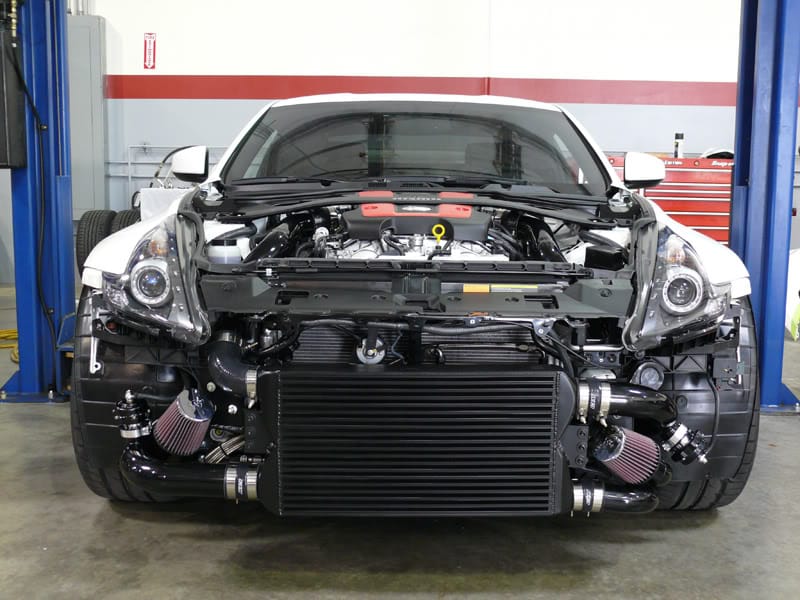
Having said this, we feel that:
- For a supercharger build, both, the 370z and 350z are great as you cannot go wrong with a supercharger.
- For a twin-turbo build, the 370z is better, owing to its larger engine and capacity to manage power.
Engine wise;
- VQ35DE is suitable for a supercharger as you can’t really go wrong with one, and most DEs you’ll find today are older and more prone to fail if not modded correctly. A single turbo for its RevUp version seems tempting as it’s known to have more top-whack power but lacks early torque which the turbo can make up for.
- VQ35HR will respond better to a single turbo and SC is always a good idea.
- VQ37VHR is great for a twin-turbo build.
Daily Driving
Given that the 350z and 370z are sports cars, it is understandable that neither of them is a perfect daily. They’re not designed for daily driving, let alone, comfortable commuting.
In spite of this, a lot of 350z/370z owners take pride in daily driving one and claim that they’re willing to forgive most of the car’s flaws because the driving experience is so much fun!
Cabin insulation isn’t the best, and a lot of road noise creeps in. If this is something that puts you off, the 350z is a better choice as it is comparatively quieter. With that said, be sure to select your 350z’s aftermarket exhaust carefully, making sure it’s not too loud.
Loud exhausts are cool and all, but they can get extremely annoying if you’re exposed to that drone for prolonged hours.
The 370z’s ground clearance is lower than that of a stock 350z and you’re very likely to scrape the underbody over tall speed bumps. Storage-wise, both cars do quite decently, considering what they’re built for. The 370z has a little more storage though.
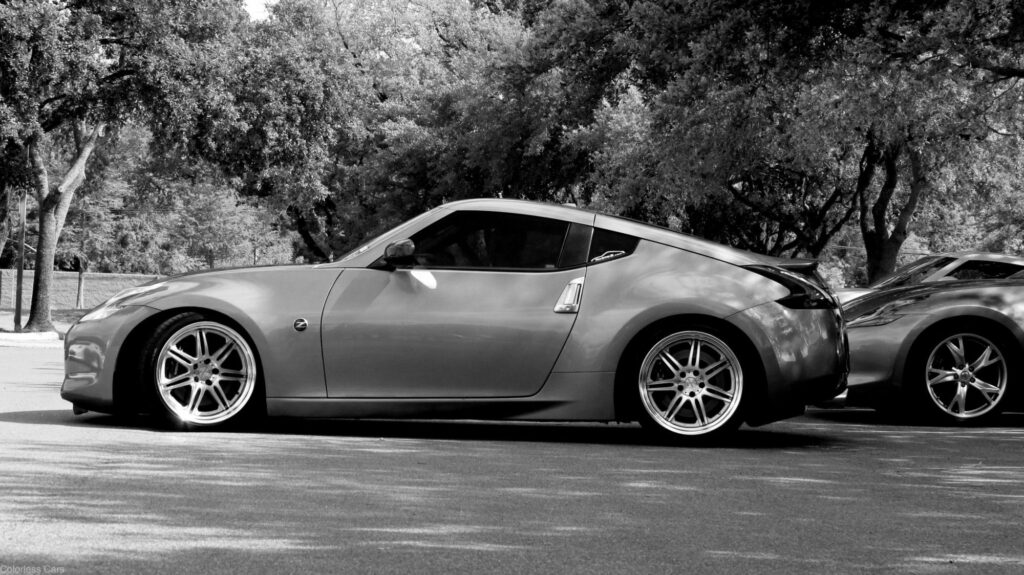
370z Over 350z: Is It Worth the Upgrade?
In spite of it being obvious that the 370z is the clear winner, we find ourselves digging for more reasons to like the 350z better. This definitely has something to do with its much-loved early 2000s JDM car charm.
As the automotive market evolves, manufacturers are pushed to make things more modern. When the Nissan 370z launched, it lost some of its charm but overall, it is a better car if you’re willing to pay the premium. If you don’t have the budget, the 350z is a no-brainer.
If you intend on making modifications, you can’t really go wrong either way. Both cars will fly with similar mods and run pretty similar times. And there’s a reason why the 350z is a popular first car for car guys and one of the best drift cars you can buy.
A used 350z probably makes more sense though. You’ll find good ones for anywhere between $11,000 to $20,000 depending on the condition. There’s plenty of aftermarket support and it’s a great project car. Modifying the 370z is more complicated and expensive.
The new 370z starts at $30,000 and its Nismo variants go up to a whopping $46,000 which in our opinion, is not worth the money.
It is too old and too underpowered compared to its rivals and severely lacks a competitive edge given that every rival car has been redesigned once or twice since the 370z came out.
In addition to this, insurance for a special release Nissan 370z is too costly. Driving quality is most certainly an asset, but it’s too low on equipment and car lovers feel that it cannot continue like this.
Luckily for us, Nissan always listens. We shall soon see a 400z.


4 comments
Thank you so much for this, oh so clear and precise, article. I was totally conflicted about which one to buy, suffice to say, I am NOT anymore! Great writing!
Which one did you choose?
I learned alot about my 2010 370z convertible, thx very useful info.
Very helpful information! I am looking for either a used a 350/370z and needed some more clarification on which one would be the better buy!